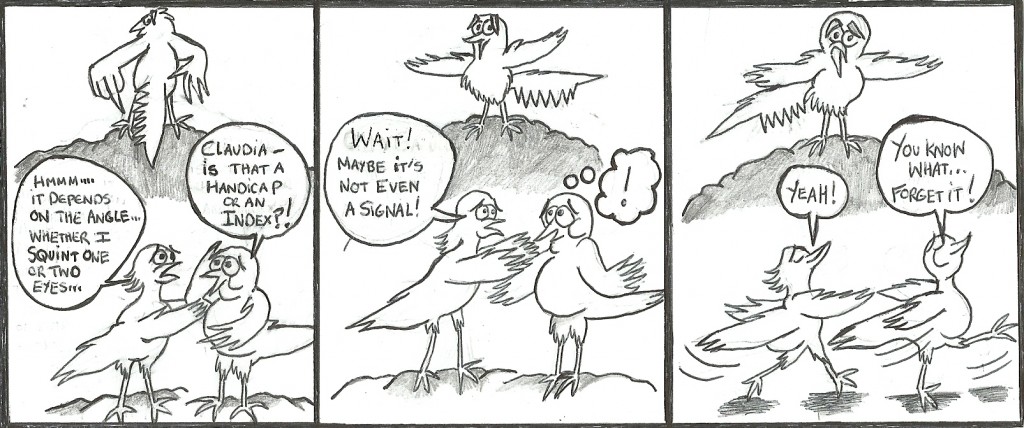The differences between handicaps and indices are usually distinguishable in formal mathematical models or in unambiguous real-world cases. Often though, classifying a trait as a handicap, an index, or even a signal at all, can be quite a difficult task.
For the purposes of illustration I will use Fluctuating Asymmetry (FA for short) as an example. Fluctuating asymmetry is the term used to refer to deviation from symmetry in paired morphological structures (ranging from birds’ tails to human faces) that should be, all being well, bilaterally symmetric. Deviations from the ideal symmetrical phenotype are caused by inherent genetic perturbations and exposure to environmental disturbances occurring in early development.
Is FA a signal?
In their 2005 book Animal Signals, Maynard-Smith and Harper define a signal as:
‘Any act or structure which alters the behaviour of other organisms, which evolved because of that effect, and which is effective because the receiver’s response has also evolved’
They then argue that FA is unlikely to function as a signal because it is difficult to discern whether receivers respond directly to FA and because there appear to be few examples of displays in which signallers actively advertise their symmetry to receivers.


